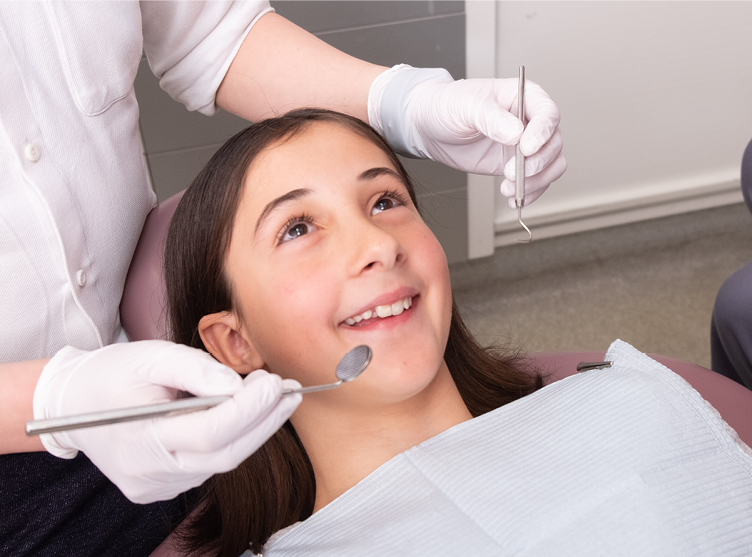Legacy Orthodontics Fundamentals Explained
Legacy Orthodontics Fundamentals Explained
Blog Article
The Best Guide To Legacy Orthodontics
Table of ContentsThe smart Trick of Legacy Orthodontics That Nobody is DiscussingThe Best Strategy To Use For Legacy Orthodontics7 Simple Techniques For Legacy OrthodonticsThe Ultimate Guide To Legacy OrthodonticsThe Definitive Guide to Legacy Orthodontics
In addition, we use adjustable therapy timetables, versatile payment options and an enjoyable, pleasurable experience.An orthodontist is a dental expert educated to detect, protect against, and deal with teeth and jaw abnormalities. Orthodontists function with people of all ages, from kids to adults.
Malocclusion, or misaligned teeth, can cause dental issues, consisting of dental caries, periodontal condition, and challenging or uncomfortable eating. Yet not everyone is born with straight teeth. If you have a poor bite or big spaces in between your teeth, you may intend to consult a dental practitioner specializing in orthodontic treatment.
The Legacy Orthodontics Ideas
( Image Credit History: DigitalVision/Getty Images) Orthodontists make use of fixed and removable dental devices, like braces, retainers, and bands, to change the setting of teeth in your mouth. Orthodontic treatment is for oral problems, consisting of: Crooked teethBite problems, like an overbite or an underbiteCrowded teeth or teeth that are too far apartJaw misalignmentThe objective of orthodontic treatment is to boost your bite.
While you may assume of orthodontists as mostly for children or teenagers that require dental braces, they can correct dental troubles at any kind of age. Orthodontists attend college, dental institution, and orthodontic college.
, however not all dental experts are orthodontists. They concentrate on two areas: Just how to correctly and securely move teeth Just how to appropriately lead advancement in the teeth, jaw, and faceOnce an orthodontist has finished training, they have the option to come to be board accredited.
Getting The Legacy Orthodontics To Work
Malocclusion leads to tooth overcrowding, an askew jaw, or irregular bite patterns. Malocclusion is generally treated with: Your orthodontist attaches metal, ceramic, or plastic square bonds to your teeth.
If you have only minor malocclusion, you may have the ability to use clear dental braces, called aligners, as opposed to conventional dental braces (https://ameblo.jp/legacyortho/entry-12869554383.html). Some people require a headwear to help move teeth right into line with pressure from outside the mouth. After dental braces or aligners, you'll require to put on a retainer. A retainer is a custom-made tool that keeps your teeth in position.
They're most typically made use of on children. They can produce extra space in the mouth without needing to pull teeth. If you have a significant underbite or overbite, you could require orthognathic surgical procedure (likewise called orthodontic surgical treatment) to lengthen or shorten your jaw. Orthodontists make use visit this web-site of cords, medical screws, or plates to sustain your jaw bone.
You might require to see an orthodontist if you have: Crowding or otherwise adequate area for every one of your teethOverbite, when your top teeth come your base teethUnderbite, when your base teeth are also much forwardSpacing or problems with gapsCrossbite, which is when your upper teeth fit behind your bottom teeth when your mouth is closedOpen bite or a vertical space in between your front base and upper teethMisplaced midline, when the facility of your base and top teeth do not line up Correcting a dental malocclusion can: Make attacking, eating, and speaking easierImprove the symmetry of our face and your overall appearanceEase pain from temporomandibular joint disordersDifferent your teeth and make them much easier to cleanse, assisting prevent tooth decay or cavities It's typically a dentist that first notices misaligned teeth during a routine examination.
See This Report about Legacy Orthodontics

During your initial orthodontic assessment, you'll likely have: A dental examPhotos taken of your face and smileDental X-raysPanoramic (360 level) X-rays of your face and headImpressions to develop molds of your teethThese examinations will aid your orthodontist recognize exactly how to wage your treatment. leesburg braces. An orthodontist is a dentist that's had training to treat your teeth and jaw
Orthodontists might carry out surgical treatment, exams,X-rays,and more to help you acquire a much more comfy, much healthier smile. An orthodontist is concentrated on your bite, so something like a broken tooth would certainly be dealt with by a dental expert. Orthodontists are dental experts but not all dental experts are orthodontists. Orthodontists are concentrated on your bite, or the means your teeth meshed, and the straightness of your teeth.
Ever before questioned exactly how stars constantly appear to have perfectly lined up teeth? The response typically depends on the experienced hands of an orthodontist. What exactly does an orthodontist do? Orthodontists are oral specialists that focus on fixing abnormalities in the teeth and jaws. Their knowledge exceeds simply developing a stunning smile; it encompasses enhancing your general dental health and wellness and function.
The Buzz on Legacy Orthodontics

While dental braces are the most frequently acknowledged orthodontic treatment, orthodontists have a diverse toolkit at their disposal. The particular strategy selected relies on the severity of the case, the individual's age, and specific preferences. These tried-and-true dental braces utilize a system of brackets bonded to the teeth and linked by cables.
Clear aligners, like Invisalign, are a prominent alternative for people looking for an extra discreet therapy option. These removable trays are personalized to progressively move the teeth's setting. Headgear may be used in combination with dental braces or aligners to use additional targeted pressures, specifically for fixing jaw discrepancies. In instances of slim jaws, palatal expanders can be utilized to develop space for correct tooth placement.
Report this page